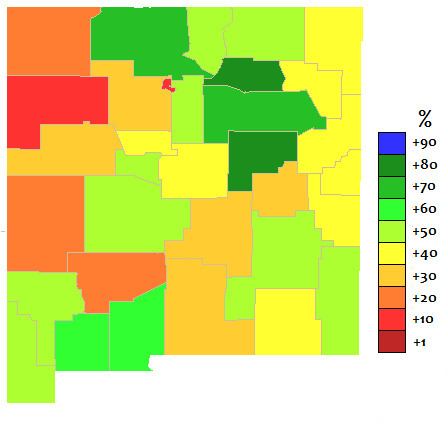Glottolog None | ||
 | ||
Language family Indo-EuropeanItalicRomanceWestern RomanceIbero-RomanceWest-IberianCastilian languagesSpanishNew Mexican Spanish Writing system Latin (Spanish alphabet) | ||
New Mexican Spanish (Spanish: español neomexicano) is a variant of Spanish spoken in the United States, primarily in the northern part of the state of New Mexico and the southern part of the state of Colorado by the Hispanos of New Mexico. Despite a continual influence from the Spanish spoken in Mexico to the south by contact with Mexican migrants who fled to the U.S. from the Mexican Revolution, New Mexico's unique political history and relative geographical and political isolation from the time New Mexico was annexed by United States from Mexico has made New Mexican Spanish differ notably from Spanish spoken in other parts of Hispanic America, with the exception of certain rural areas of northern Mexico and Texas.
Contents
Speakers of New Mexican Spanish are mainly descendants of Spanish colonists who arrived in New Mexico in the sixteenth through the eighteenth centuries. During this time, contact with the rest of Spanish America was limited, and New Mexican Spanish developed on its own course. In the meantime, Spanish colonists coexisted with and intermarried with Puebloan peoples and Navajos. After the Mexican–American War, New Mexico and all its inhabitants came under the governance of the English-speaking United States, and for the next hundred years, English-speakers increased in number.
For these reasons, the main differences between New Mexican Spanish and other forms of Hispanic American Spanish are these: the preservation of forms and vocabulary from colonial-era Spanish (e.g., in some places haiga instead of haya or Yo seigo instead of Yo soy); the borrowing of words from Rio Grande Indian languages for indigenous vocabulary (in addition to the Nahuatl additions that the colonists had brought); a tendency to "re-coin" Spanish words for ones that had fallen into disuse (for example, ojo, whose literal meaning is "eye," was repurposed to mean "hot spring" as well); and a large proportion of English loan words, particularly for technological words (e.g. bos, troca, and telefón). Pronunciation also carries influences from colonial, Native American, and English sources. In recent years, speakers have developed a modern New Mexican Spanish, called Renovador, which contains more modern vocabulary because of the increasing popularity of Spanish-language broadcast media in the U.S. and intermarriage between New Mexicans and Mexican settlers; the modernized dialect contains Mexican Spanish slang (mexicanismos).
History
The development of a culture of print media in the late nineteenth century allowed New Mexican Spanish to resist assimilation toward either American English or Mexican Spanish for many decades. The 1911 Encyclopædia Britannica, for instance, noted that "About one-tenth of the Spanish-American and Indian population [of New Mexico] habitually use the English language." Until the 1930s or 1940s, many speakers never came to learn English, and even after that time, most of their descendants were bilingual with English until the 1960s or 1970s. The advance of English-language broadcast media accelerated this decline. The increasing popularity of Spanish-language broadcast media in the U.S. and intermarriage of Mexican settlers and descendants of colonial Spanish settlers has somehow increased the speakers of New Mexican Spanish.
Morphological variation
Besides a great deal of phonological variation, there are various morphological differences throughout New Mexican Spanish, usually in verb conjugations or endings:
Phonetic variation
There are many variations of New Mexican Spanish (they can be manifest in small or large groups of speakers but there are exceptions to nearly all of these tendencies):
Language contact
New Mexican Spanish has been in contact with several indigenous American languages, most prominently those of the Pueblo and Navajo peoples the Spaniards and Mexicans coexisted with during colonial times. For an example of loanword phonological borrowing in Taos, see Taos loanword phonology.
Legal status
New Mexico law grants Spanish a special status. For instance, constitutional amendments must be approved by referendum and must be printed on the ballot in both English and Spanish. Certain legal notices must be published in English and Spanish, and the state maintains a list of newspapers for Spanish publication. Spanish was not used officially in the legislature after 1935. Though the New Mexico Constitution (1912) provided that laws would be published in both languages for twenty years and this practice was renewed several times, it ceased in 1949. Accordingly, some describe New Mexico as officially bilingual, while others disagree.
